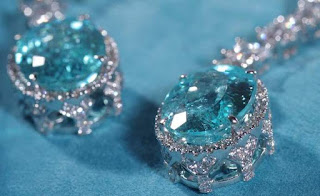Over the years I've enjoyed stepping into Chanel on West 57th Street in Manhattan when I passed it periodically. The employees always treated me well despite the fact I was only a browser. Although famous for its pricey classic bags and small leather goods, one of the items for sale I examined (or should I say played with) was a huge lambskin jewelry box (for the consumer who has everything😛). The big case measures 5.5" x 22" x 9.3" and sells for around $26,000. It comes with elegant gold keys to lock it. A sales associate told me the store sold one a few days prior to my visit. If a customer spends that much on a jewelry box we agreed, we'd love to see her jewelry!
It turns out many luxury brands sell novelty goods. Liberty's Advent Calendar began as novelty stock before becoming a much anticipated annual October launch which sells out within days.
A novelty item is an object created to serve no practical purpose; or is designed fanciful to be unique, humorous, or something new and different with no additional functions. For example, a jewelry box is useful, but does a customer really need a Chanel $26,000 box to hold her jewelry? Of course not! Likewise, for nail polish containing ground black diamonds that sells for $250,000 a bottle. Wild, right? Nonetheless, people talk about it!
 |
| Burberry Thomas Bear - $620 |
Luxury brands produce novelty goods for 2 main reasons: 1) It's great marketing for the brand, generating lots of buzz and publicity, and 2) Retailer studies find that luxury shoppers spend less money on others (i.e. on gift giving) than they do on themselves. Many luxury novelty items, called tchotchkes in the industry, including Dior candles, Hermès' incense sticks, a Burberry Teddy bear, or a Louis Vuitton Christmas ornament, sell for $25 to under $100 much less than designer handbags or clothes. Highrollers (The rich and HENRYS [High Earners Who Aren't Rich Yet] buy them as gifts, and wannabes who can't afford luxury bags will buy something smaller and cheaper to own a coveted designer's name.
Nowadays luxury brands are expanding their entry-level priced novelty inventory to boost both their revenues and demographics. And, guess what? The proliferation of tchotchkes is very profitable for elite fashion houses as the demand for luxury continues to grow.


You can google a slew of articles that try to explain what motivates luxury shopping ... and whether making trinkets priced within reach of more people helps or hurts a luxury brand. Are you willing to pay more for brand exclusivity? HENRYS and Wannabes do! Long-time readers can guess my answer.🙂
You may also enjoy:












